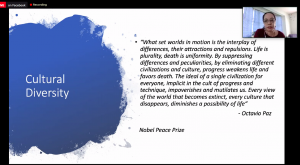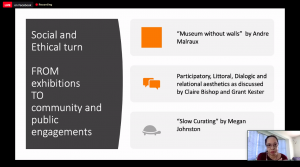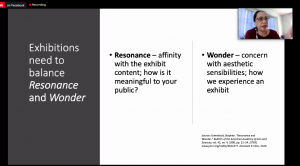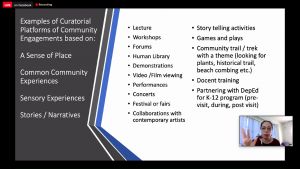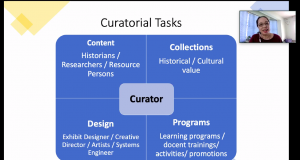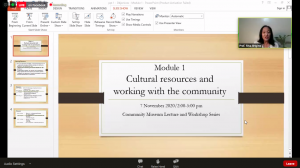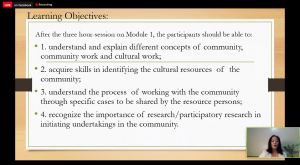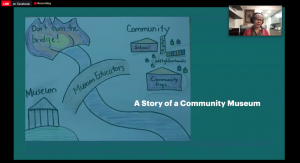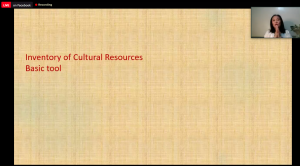Finally, a coffee table book dedicated to the town of Buenavista would be released during its 102nd founding anniversary and providentially in time for Marinduque’s centennial year this 2020. It is indicative of the intricate, complex and deep connections of the town of Buenavista to the province of Marinduque. The former has gone several transformations as the 4th visita called Mahanguin apart from Monserrat (Boac), San Bernardo (Gasan) and San Juan (Sta,. Cruz) de Marinduque. Buenavista was the adjacent pueblo called Sabang still attached to the mother town of Gasang. Before becoming the most recent addition to the latter, the province considered as the geodetic center of the country and the heart of the archipelago.
So as not to preempt the critical next steps of the province of Marinduque after its centennial year, the town of Buenavista is opening new pages of the book of history in the age of pandemics. Let this piece of contribution a drop in the bucket for the next generation. Let me divide this brief introduction into several parts: cultural mapping experience in 2018, townscapes of Buenavista from Marinduque: the heart of the Philippines and the continuing Marinduque timeline to the future Marinduque Studies.
Revisiting the University of the Philippines (UP) Diksyonaryong Filipino (2001), I went back to the definitions of both terms Gasang and Sabang. The former is defined as “pira-pirasong bato, batong durog, tatal ng kabibe, daluyong ng malalaking alon na sumasalpok sa dalampasigan, halamang dagat na hugis tangrib.” The latter has an entry, “salikop o hugpungan ng dalawa o mahigit na lansangan, riles, kalye, ilog at mga katulad, junction, arimpongapong, ginsang-an, intersection, kinasang-an, krosing, nagsangan, salapong, saranga.” Both definitions convey insights not only about the town of Buenavista but also the province of Marinduque.
According to Marinduque: Heart of the Philippines, Buenavista was formerly known as Sabang. This view is corroborated by a couple of type-script manuscripts of one of the pioneers of local studies and history who belongs to the Gasan Historical Society, Deacon Jose Sadia. The IFI stalwart and education administrator has produced a dictionary of Gaseno terms and History of Gasang along with the History of Sabang. Fr. Christian San Juan has already came out with micro-history with “Ang Kasaysayan ng parokya ng Batang si Hesus, Buenavista, Marinduque.” vis-a-vis “San Bernardo de Marinduque St. Joseph Spouse of Mary parish, Gasan, Marinduque.“
Cultural and Heritage Mapping of the small town
I have been involved with the Cultural Mapping project in Buenavista since 2018, I was acutely aware that since 2012 there had been efforts to complete and finish the what has started in the capital town of Boac. Anticipating the centennial year of Marinduque by 2020, I was fervently hoping that we would be able to finish the six towns of the province. Within the same year, we were able to restart the previous efforts to put Marinduque in the culture and arts map with the heritage mapping in Mogpog and Buenavista. The following year, we were able to lobby and coordinate with the respective Local Culture and Arts Council of Torrijos, Gasan and Sta.Cruz, by the last quarter of 2019, the National Commission for Culture and the Arts (NCCA) through the Sub-Commission for Cultural Heritage Cultural Mapping project grants for Local Government Units.
So far, after much deliberation and anticipation with the continuing efforts which began with a scoping and negotiation meeting with key municipal officials, presentation to the Sangguniang Bayan and formation or more of reactivation of the Local Culture and Arts Council, a memorandum of understanding was executed with the chief executive. In between local elections, a weeklong training with local mappers and representatives of the communities involved and Marinduque State College, targets were drawn and divided accordingly. There were at least 238 elements divided to natural, tangible movable, immovable and intangible cultural heritage. Then there was the 1st follow-up visit and the change of personnel and leadership. MSC had its share of transformations but some things remain constant, the significance and immutability of history and heritage. This coffee table book is a continuing work for everybody to partake in and enjoy.
Buenavista Townscapes with a great vista
Cultural work did not begin only recently, we pay homage and tribute to the pioneers and who stood in our place a long time ago. We just pick up the trail where they left off. Though only 34 items were selected to be included in the coffee table book, it does not mean the rest is excluded. In the same token, if there were only 14% of the target met in the cultural heritage mapping, what matters more is we could build on this as reinforcement of the earlier work. Just like the manuscripts, books and even photographic documentations.
Apart from reviewing the coffee table book, there is section about the each town also included with the video companion “round the isle,” we turn to the pages of photographs and captions. The first image presents the view of the Elephant Island before becoming Bella Roca with a couple of bancas. Building one of Buenavista’s intangible cultural heritage on boat-building, there is really a tradition of fishing and island-ness. The opposite page presents a caption which reads “the town maybe the smallest among the six yet it has been equally blessed with the natural wonders that only a gentle giant of a mountain can provide.” Instead of the image of the nearby islet, the natural heritage being referred to is none other than Mt. Malindig. Buenavista might not be endowed with too many structures or built heritage but it is iconic and exemplary because of it is blessed with natural wonders which makes a name worthy of this place. The townscapes backdrop of the mountains and the sea make Buenavista what it is. As one who appreciated the view, Fr. Clemente Ignacio echoed before him, what a good view, hence Buenavista.
Continuing Marinduque Timeline to local and area studies
As Fr. San Juan points out, “the island of Marinduque was known as “Malinduk,” a name derived from the beautiful mountain of Malindig. During the colonial period, the island of Marinduque was divided into three visitas namely, Monserrat de Marinduque (Boac), San Bernadro de Marinduque (Gasan) and San Juan de Marinduque (Sta.Cruz).” Our province is known for devotion and religiosity, therefore it does not come as a surprise we pay respects to the churches of the old.
Based on History of Marinduque excerpts on the “sources of the name of marinduque” Buenavista was mentioned along with the iconic natural heritage, Mt. Malindig. The first source, “it could have come from the name of “Malindig” of a steep mountain in this southernmost part of the island within the jurisdiction of the old town of Gasan before but now within the jurisdiction of the new town of Buenavista.” The continuing timeline of Marinduque through its more established towns of Boac, Gasan and Sta.Cruz is projected through the dynamics of the newer towns of Mogpog, Torrijos and of course, Buenavista.
Moreover, it was long presumed that Buenavista was established as a municipality on January 1, 1919 with Don Agaton Sarmiento as its first Municipal president (town head). But in light of documentary evidence that the founding date is November 9, 1918 rather the above mentioned date. Before the establishments of the towns in Mogpog, Torrijos and Buenavista, Mogpog was part of Boac, Torrijos was part of Sta.Cruz and Buenavista was a part of Gasan.
Moreover, the work of Perfecto Mirafuente and Ramon Madrigal, History of Marinduque, about the end of the year 1918, the people of Buenavista under the leadership of Don Agaton Sarmiento and Don Ciriaco Arevalo, petitioned through Lieutenant Governor, Don
Pedro madrigal of the sub province of Marinduque that Buenavista be separated from Gasan and made a town. Endorsed favourably by Governor Madrigal, the petition was approved, and Buenavista became a town.
There is also an explanation about the name of the town, Buenavista. According to History of marinduque excerpts, Buenavista was a barrio of Gasan and during the Spanish times until the first two decades of the 20th century. the name of Buenavista was given to the barrios by the Spaniards when they were exploring that part of the island of Marinduque. it was reckoned that the when the explorers were standing on the shores of Buenavista, they had a “good view” Buenavista of the sea with the island of Mindoro yonder and beautifully aligned three isles which they already called “Islas de Los Tres Reyes, Gaspar, Melchor and Baltazar, when they were exploring the place that was Gasan.
On the occasion of Marinduque ’s Centennial foundation as an autonomous province and the 102nd year of establishment of the town of Buenavista, may this coffee table book inspire the succeeding generation thrive despite the state of calamity brought about Covid19. We will continue and go on with the legacy of the our humble yet noble ancestors. May we be guided accordingly with grace and blessings.
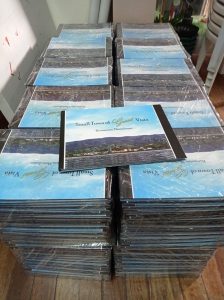
Dr. Randy T. Nobleza
MSC Center for Language and Culture
Marinduque State College


